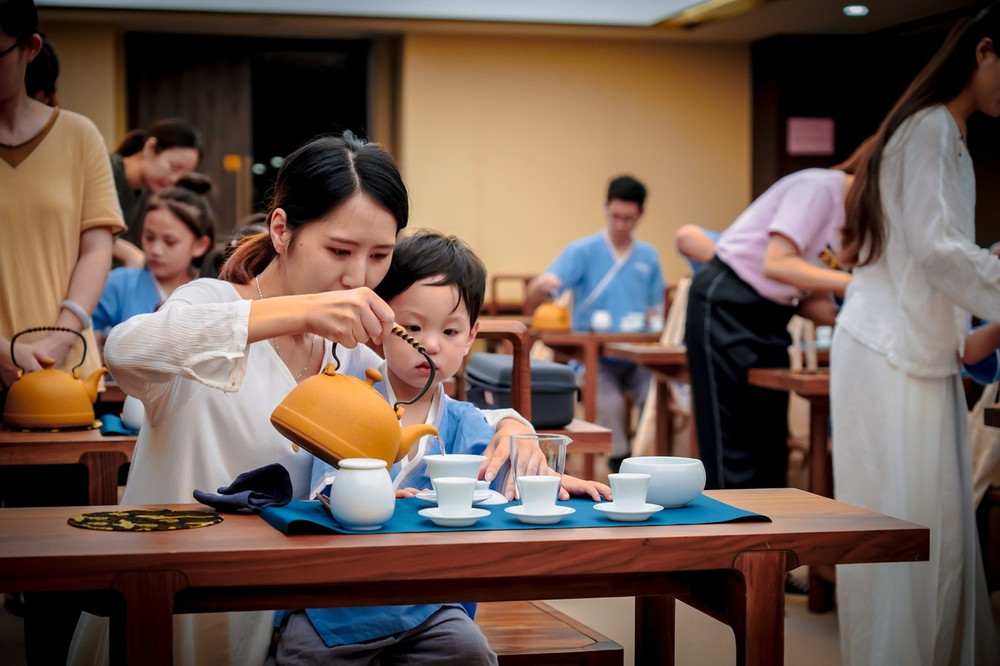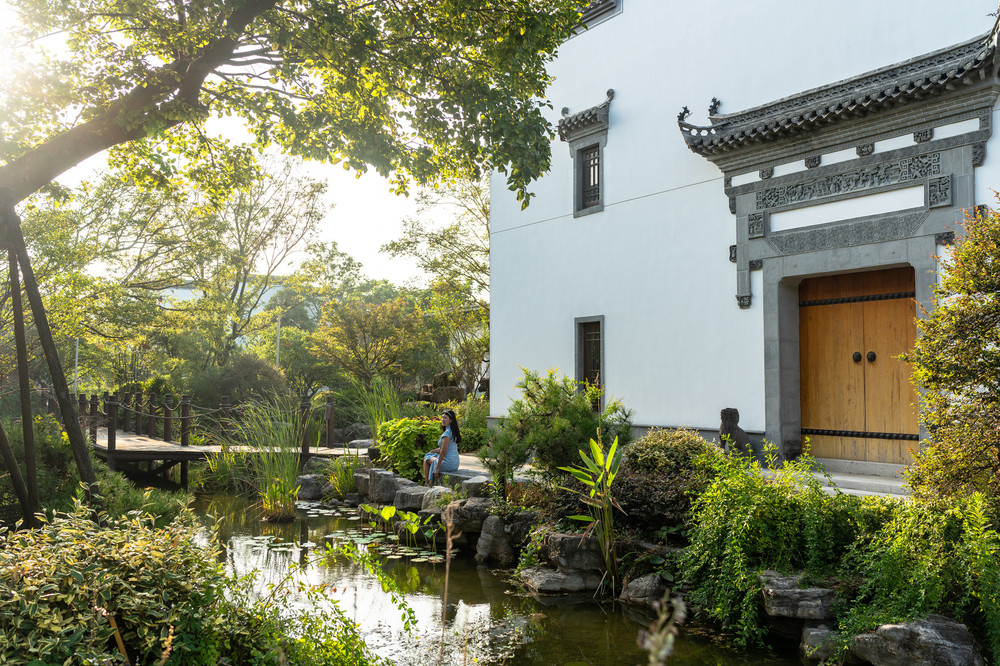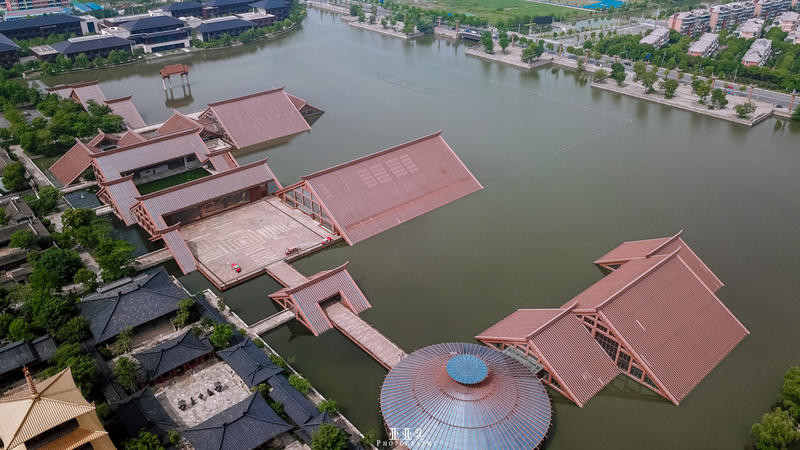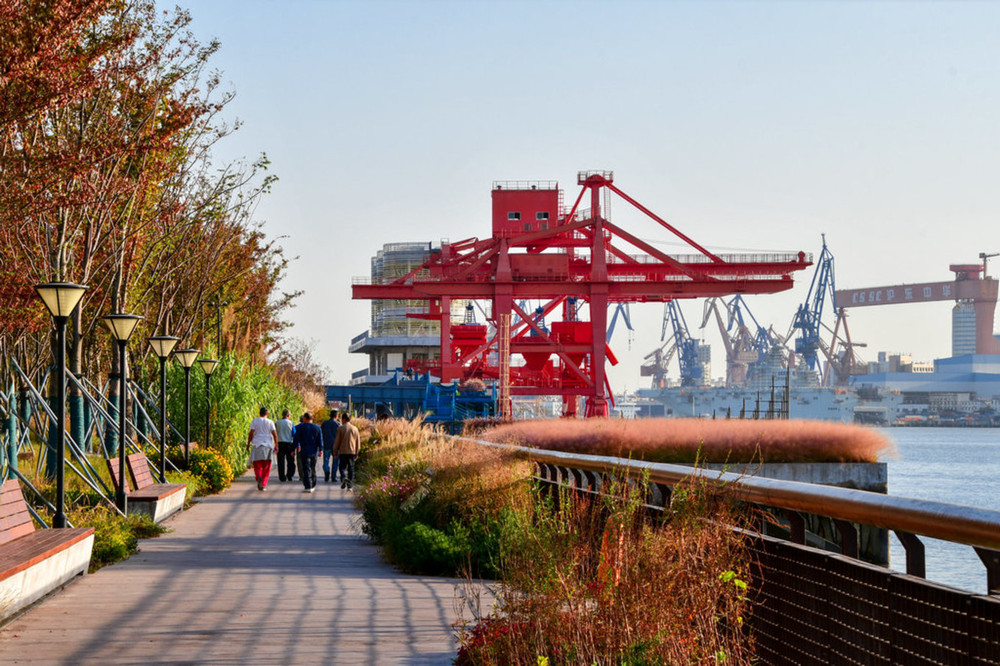Duration: 3 days.
Per capita cost: 330 yuan.
With whom: Friends.
Ways of playing: Self-driving, independent travel, budget travel.
The author visited these places: Shanghai Dongping National Forest Park, farmhouses, Chongming Island, Shikumen.
Published on September 6, 2021 at 10:05.

The 10th Flower Expo, which lasted for 43 days, was held in the Dongping National Forest Park area of Chongming District, Shanghai from May 21 to July 2, 2021. After the closing ceremony on July 2, in order to meet the needs of citizens for parent-child outings and leisure vacations during the summer vacation, after partial adjustments, it continues to be open to the public in the form of the Flower Expo Cultural Park and closed smoothly on August 31. We came here on August 23 before the park closed.
Originally, we did not plan to visit the Flower Expo Cultural Park. A friend sent a link. The content is roughly that in order to let more citizens enjoy the ecological beauty of the flower expo, Chongming District has decided to give tourists staying in hotels, homestays, and farmhouses in Chongming free access to the Flower Expo Cultural Park. Thus, friends organized a team of 22 people and went to Chongming Island to participate in a three-day and two-night farmhouse stay. One of the activities is to freely visit the Flower Expo Cultural Park.
On the 24th, it was cloudy. After having breakfast in the morning, we drove from the farmhouse accommodation to the Flower Expo Cultural Park. All parking lots have been closed, and only parking lot P1 in the North Park is open. Entering the North Park through the parking lot, the first thing that catches the eye is the building at the main entrance. It is both like two lush big trees and like two blooming magnolias. The gate of the building is 19.21 meters high and 100 meters wide, implying the 100th anniversary of the founding of the Communist Party of China.
Since many venues are closed, we chose the following tour route:
First stop: Century Pavilion.
The big butterfly Century Pavilion will definitely not be missed. The Century Pavilion has become the most popular ‘check-in place’ in the flower expo park with its unique colorful butterfly shape. The Century Pavilion is divided into the east hall and the west hall. The west hall is a plant-themed hall and is divided into two major parts: an indoor exhibition hall and an outdoor open-air exhibition hall. The Century Pavilion is covered by 680,000 flowers and is the largest roof garden in China. The roof garden has been closed and people are not allowed to go up on the wings.
Second stop: Renaissance Pavilion.
The magnificent Renaissance Pavilion is structured with Chinese classical sloping roofs and colonnades. The cascading sloping roofs imply the magnificent great journey of the road to rejuvenation. The Renaissance Pavilion is the indoor exhibition area of provinces, autonomous regions, municipalities directly under the Central Government and branches of the China Flower Association. Areas A1 and B1 are still open. We chose to visit area B1 among them because it contains the three indoor venues of Shanghai, Jiangsu, and Zhejiang that are very popular.
As a tourist in Shanghai, you must visit the Shanghai Pavilion. The Shanghai Pavilion takes ‘A city of flowers by the sea’ as the theme and creates an urban garden under magnolias through three large landscapes with the city flower magnolia as elements. The ‘colorful’ magnolia-themed ribbon arch, magnolia carvings and magnolia petal decoration frames. Inside the Shanghai Pavilion, there are seven exhibition areas such as potted flower display area and cut flower display area. A total of more than 600 exhibits are displayed, which is the largest number of exhibits in the indoor exhibition garden of Shanghai in previous flower expos. In the potted flower display area, hundreds of fine potted flowers are placed on the high and low exhibition stands with dark gray backgrounds in an orderly manner, with a strong sense of hierarchy.
Next door is the Jiangsu Pavilion, with a grand and spacious main entrance, where the bright and large ‘Jiangsu’ title and the theme words ‘Jasmine Blossoms, Chinese Dream’ are bold and eye-catching. The interior layout has a strong contemporary style and Jiangnan ecological characteristics. With a lively cloud-like atmosphere, decorated with scattered flower arrangements, potted plants, and bonsai, and highlighted by the famous Jiangsu flower jasmine, it showcases the era’s elegance of Jiangsu.
The Zhejiang Pavilion is themed ‘Red Boat Centennial, Flowers Bloom in Zhejiang’, taking the centenary of the founding of the Communist Party as the main line, perfectly integrating design elements such as the redEmbarking on a journey through the domestic exhibition area, one is greeted by a series of gardens representing various provinces and cities, each showcasing their unique contributions to Zhejiang’s flower gardening through new products and technologies. The exhibition is divided into four thematic chapters: ‘Dreaming Back to South Lake’, ‘Green Water Mountain’, ‘Beautiful Home’, and ‘Happy Life’.
The Shanghai Garden, named ‘Yuan Meng Yuan’, immediately captures the visitor’s attention with its red Shikumen elements. This garden symbolizes Shanghai as the birthplace of the Communist Party of China, a place where the Chinese Dream is realized. It boasts four distinctive features: the fusion of tradition and modernity, an array of new plant varieties, exquisite construction, and meticulous gardening. The garden is designed to guide visitors through corridors, paths, and curved bridges, passing by aquatic plants and undergrowth flower belts, offering a blend of rich landscapes and spiritual experiences.
Beijing’s garden stands out with a wooden archway and striking red walls, reminiscent of the city’s garden landscape architecture. Traditional flowers such as roses, chrysanthemums, peonies, and lotuses are the main attractions, set against a backdrop of the old city framework and the Forbidden City’s ancient architectural style.
The Tianjin Garden, with the theme ‘Blossoms at the Gate of Tianjin’, showcases the city’s rich cultural heritage through interactive flower pieces, Yangliuqing doll sculptures, and diverse flower plantings. The Jiangsu Garden, themed ‘Six Interests of Planting Flowers’, highlights the beauty of classical gardens with small bridges, flowing water, pavilions, and intricate greening combinations. Unique to this garden is its enclosure by pink bricks and black tiles, reflecting the tranquility of Jiangnan classical gardens.
Hebei’s garden, themed ‘Beauty of Yan Zhao’, integrates Hebei’s historical and cultural characteristics with flower landscapes using traditional Chinese garden landscape techniques. The Zhejiang Garden, with the theme ‘Pursuing Dreams · Zhejiang Here’, transforms the exhibition garden into a ship symbolizing leadership in the distant sails. Shanxi’s garden, ‘Flower Round Shanxi Dream’, features iconic spots such as the Stork Tower and elements of Tang Style and Jin Charm, transporting visitors to the charm of Shanxi with native plants and the bell ringing from the tower.
Anhui’s garden, ‘The Beauty of Wan Feng, New Charm of Ink’, combines characteristic plants, garden buildings, and landscape sketches to create an ecological and peaceful space, allowing visitors to experience Anhui’s economic, social, and cultural characteristics.
For a taste of the grassland charm, the Inner Mongolia Garden offers a flower-filled prairie experience with yurts and Mongolian folk songs. The Liaoning Garden, ‘Revitalization Dream Symphony’, presents the Red Mountain culture, the Liao River, and the old industrial base’s heritage. The Jilin Garden, ‘Spring Dawn at Bu Xian’, distills Jilin’s natural scenery, cultural heritage, and industrial achievements into a virtual and real design, depicting a spring scene on Changbai Mountain.
The Heilongjiang Garden features simulated snow and ice on the grass, while the Guangdong Garden, ‘Yue Fang Garden’, is themed ‘Blooming Chinese Dream, Green and Beautiful South of the Five Ridges’. The Jiangxi Garden, with the theme ‘Azaleas Blooming More Vibrantly’, revolves around the red ribbon, green mountains and waters, and colorful technology, offering a vibrant display of the province’s spirit.The Fujian Garden is themed ‘Splendid Mountains and Rivers, Chinese Dream, and the Fragrance of Flowers in Fujian.’ It is divided into three areas: the ‘Fujian Homestead’ main entrance area, the ‘Sun and Moon Shine Together’ waterfront landscape area, and the ‘Flower Field Celebration’ theme plant area. It extracts cultural marks of Fujian such as ancient houses, flying eaves, red walls, and earth buildings. It uses representative plants like bananas, loquats, and bamboos, as well as characteristic flowers like bougainvillea and cockscomb flowers to create a romantic garden that condenses Fujian culture.
The Guangxi Garden is themed ‘Blooming in the South, Most Beautiful in the World.’ It integrates the characteristic landscape elements, ethnic elements, and special flowers of Guangxi into the scenery, fully demonstrating the achievements in the construction and development of Guangxi culture and the flower industry.
The Hainan Garden is themed ‘Blooming Hainan, Shared by All.’ It fully displays the regional characteristics of Hainan and the traditional culture of the Li people through the entrance ship-shaped building gate, the Deer Turning Back sculpture, the blue water beach, and the islands.
The Shandong Garden is themed ‘Blooming Era, Fragrance Spreading Over Qi and Lu.’ It is unique to Shandong, presenting a beautiful picture of blooming flowers and dancing fragrances.
The Shenzhen Garden is themed ‘Mountain and Sea Deep City, Elegant and Flourishing Shenzhen.’ It uses the city flower of Shenzhen, ‘Bougainvillea,’ as the theme flower, fully displaying the beauty of Shenzhen’s city flower, garden, and urban culture.
The Shaanxi Garden is themed ‘Inheriting Red, Flowering Sanqin.’ It uses the Pagoda Mountain in Yan’an, creating a landscape highlight in the park with ‘paper-cut’ art combined with rust plates.
The Chongqing Garden is themed ‘Surrounded by Mountains and Waters, Flowering Chongqing.’ It is mainly created with plants, using flowers, trees, shrubs, and artificial wetlands as carriers to show the urban pattern of Chongqing ‘where the city is among the mountains and waters, and the mountains and waters are in the city.’
The Gansu Garden is themed ‘Blooming Ruyi, Dreaming Gansu.’ It outlines a grand picture of the Silk Road, the charming Longyuan, and a splendid Gansu full of flowers.
The Qinghai Garden is themed ‘Flowers of the Three Rivers, Beautiful Qinghai.’ It connects five landscape areas with a circular walkway.
The Ningxia Garden is themed ‘Flowers on the Frontier, Wolfberry Fragrance Home.’ It showcases the magical and beautiful natural scenery of Ningxia through four major attractions: Flower Fruit Helan, Red and Green Liupan, Nine-Bend Flower River, and Wolfberry Fragrance Home.
The Xinjiang Garden is themed ‘Blooming Fruit Fragrance, Unity and Struggle.’ It symbolizes the spirit of ‘all ethnic groups tightly holding together like pomegranate seeds’ with the pomegranate spirit. The colorful flower belt of the Belt and Road links the whole garden, and the landscape layout reflects the belt and the four gardens.
The Tibet Garden is themed ‘Ecological Tibet.’ It comprehensively displays the achievements of ecological environment construction in urban and rural areas of Tibet. Tibet Garden is rich in Tibetan style, with characteristic elements such as white pagodas, Bianma walls, and wind horse flags.
The Hong Kong Garden is themed ‘Fragrant Garden.’ The structure imitating the Tsim Sha Tsui Clock Tower is flanked by blooming Bauhinia, native Hong Kong rhododendron varieties, osmanthus, and silk cotton.
The Taiwan Garden is themed ‘Flowers Bloom on Both Sides of the Strait, Realize Dreams with One Heart.’ The northern area connects multiple landscapes (Butterflies Dancing, Elegant Garden Pavilion, 101 Flower Tower, etc.) with a circular path.
The Macau Garden is themed ‘Dream Back to Hao Jiang.’ The exhibition garden interprets the form of dreams in the form of a ‘green scroll’, taking green plants as the gardening base to show Macau’s unique urban flower landscape style with the integration of Chinese and Western cultures. Surrounding the circular fountain are several circles of architectural complexes of different styles and colors, fully demonstrating the urban style of Macau where Chinese and Western cultures blend. Moreover, these buildings have flower walls, flower windows, and flower corridors.









